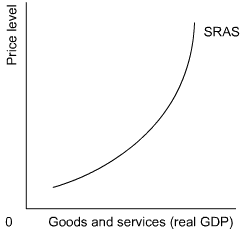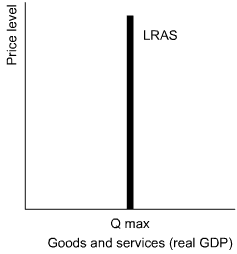Do you want BuboFlash to help you learning these things? Or do you want to add or correct something? Click here to log in or create user.
Subject 4. Aggregate Supply
#cfa #cfa-level-1 #economics #has-images #macroeconomics #reading-17-aggregate-output-and-economic-growth
The aggregate quantity of goods and services supplied depends on three factors: labor (L), capital (K), and the state of technology (T).
Y = F (L, K, T)



The aggregate supply curve (AS) represents the relationship between the quantity of goods and services supplied and the price level. It is important to distinguish between long-run aggregate supply and short-run aggregate supply.
The short-run aggregate supply curve typically slopes upward to the right. In the short run, some prices (e.g., rents, wages) are temporarily fixed as the result of prior commitments. Therefore, firms will expand outputs as the price level increases because higher prices will improve profit margins. Short-run equilibrium occurs when the aggregate quantity of goods and services demanded is equal to the aggregate quantity supplied.

The long-run aggregate supply curve is vertical. In the long run, people have sufficient time to alter their behavior to adjust fully to price changes. The sustainable level of output is determined by a nation's resource base, technology, and the efficiency of its institutional factors. The price level has no effect on a nation's long-run aggregate supply. In long-run equilibrium, current output (Yfull) will equal the economy's potential GDP, the economy is operating at full employment, and the actual rate of unemployment will equal the natural rate of unemployment.

Aggregated demand and supply determine the level of real GDP and the price level of a nation.

If you want to change selection, open original toplevel document below and click on "Move attachment"
Summary
| status | not read | reprioritisations | ||
|---|---|---|---|---|
| last reprioritisation on | suggested re-reading day | |||
| started reading on | finished reading on |
Details
Discussion
Do you want to join discussion? Click here to log in or create user.